first edition
1887 · Osaka
by Ushinosuke Kitani (author). Haruchiyo Uji (preface)
Osaka: Nakagawa Seijiro, 1887. First Edition. 8vo (180 x 125 mm). [44] pp. Illustrated with 36 woodcuts ranging from small diagrams to full-page plates. Printed on double-leaves, stab-stitched and bound in a traditional western case-binding, original publisher's boards backed in cloth, marbled edges (!). The Japanese leaves are folded on top of waste paper leaves from newspapers created for Western audiences (see below), thereby bolstering the book's structure. Binding shaken, worn, soiled, and subjected to some biopredation, cloth spine partly defective, text foxed. A good-minus copy but complete, unsophisticated, and suitable for exhibition and study. NO OTHER COPY LOCATED. THIS EXTRAORDINARY JAPANESE BOOK ("A MUST-READ FOR WOMEN OF OUR COUNTRY") CELEBRATES WESTERN VIEWS OF WOMEN AND INDUSTRIAL PROGRESS, VIEWS THAT ARE PRESENTED IN A WESTERN-STYLE PUBLISHER'S CASE-BINDING WHICH UTILIZES ENGLISH LANGUAGE NEWSPAPER WASTE SHEETS THAT STRENGTHEN THE THIN JAPANESE PAPER.
The fascinating preface reads: "Although our bodies and appearances differ between men and women, our hearts are the same; born from the nation under the sun, originating from the same tree. It is said that women should not be despised or treated lightly merely because they are women. From what I hear in the writings, Western women have the same rights as men. It is indeed challenging, but the reason for this equality of rights seems to be that both men and women greatly benefit from their rightful and effective contributions. Our country's women should not be uneducated and unprotected, and should not be laughed at for not achieving their rightful status. Now, gradually, as the winds of civilization blow and the customs of enlightenment spread, the frequency of Western culture, arts, and academic achievements has been increasing daily, a development that is truly joyous.
"However, the other day, my friend Mr. M came and showed me a text entitled 'Guide to Western Wool Craft' [i.e. the present text] asking me to write the preface. Upon reading it, I thought it to be beneficial. This book will be a valuable guide for teaching arts to the women of our country in the future. If they learn from this book, even the women of higher circles could lay the foundation for charity in the world, while those of lower status could contribute to their family's livelihood, thus benefiting society significantly. This book is indeed a must-read for the women of our country" (translation by M. Callen who is largely responsible for the present catalogue entry).
PHYSICAL BOOK: Unusually, not only are the edges of the textblock marbled, but into the present volume are bound English (and occasionally German) language newspaper waste sheets that support the folded thin Japanese paper. These conjugate leaves were sewn overcast and bound in a western publisher's case binding. Herein we find waste sheets from an 1884 issue of "The Japan Daily Herald." These inner waste sheets are visible when the conjugate Japanese leaves surrounding them are bowed inward. The reader is then able to peer into hidden news reports concerning Japanese ports and banking, auctions and advertising (there is even a pictorial ad for a hat shop). Even more unusual than the (incorrectly translated) English title on the front board is the use of German Fraktur type for a single line of text: "Publish. S. Kitan," a name which seems to have nothing to do with the publication itself.
Published in Osaka, the so-called "Manchester of the East," which became central to Japan's industrialization, the present book was offered as a resource for women to gain employment. Though little information about the authors is available in English-accessible resources, Ushinosuke Kitani is known to have published "A Guidepost to the English Language," and Haruchiyo Uji, who wrote the preface, was the author of several educational volumes.
Not in Worldcat. Not located in an any Japanese online library catalogue consulted by us. (Inventory #: 4383)
The fascinating preface reads: "Although our bodies and appearances differ between men and women, our hearts are the same; born from the nation under the sun, originating from the same tree. It is said that women should not be despised or treated lightly merely because they are women. From what I hear in the writings, Western women have the same rights as men. It is indeed challenging, but the reason for this equality of rights seems to be that both men and women greatly benefit from their rightful and effective contributions. Our country's women should not be uneducated and unprotected, and should not be laughed at for not achieving their rightful status. Now, gradually, as the winds of civilization blow and the customs of enlightenment spread, the frequency of Western culture, arts, and academic achievements has been increasing daily, a development that is truly joyous.
"However, the other day, my friend Mr. M came and showed me a text entitled 'Guide to Western Wool Craft' [i.e. the present text] asking me to write the preface. Upon reading it, I thought it to be beneficial. This book will be a valuable guide for teaching arts to the women of our country in the future. If they learn from this book, even the women of higher circles could lay the foundation for charity in the world, while those of lower status could contribute to their family's livelihood, thus benefiting society significantly. This book is indeed a must-read for the women of our country" (translation by M. Callen who is largely responsible for the present catalogue entry).
PHYSICAL BOOK: Unusually, not only are the edges of the textblock marbled, but into the present volume are bound English (and occasionally German) language newspaper waste sheets that support the folded thin Japanese paper. These conjugate leaves were sewn overcast and bound in a western publisher's case binding. Herein we find waste sheets from an 1884 issue of "The Japan Daily Herald." These inner waste sheets are visible when the conjugate Japanese leaves surrounding them are bowed inward. The reader is then able to peer into hidden news reports concerning Japanese ports and banking, auctions and advertising (there is even a pictorial ad for a hat shop). Even more unusual than the (incorrectly translated) English title on the front board is the use of German Fraktur type for a single line of text: "Publish. S. Kitan," a name which seems to have nothing to do with the publication itself.
Published in Osaka, the so-called "Manchester of the East," which became central to Japan's industrialization, the present book was offered as a resource for women to gain employment. Though little information about the authors is available in English-accessible resources, Ushinosuke Kitani is known to have published "A Guidepost to the English Language," and Haruchiyo Uji, who wrote the preface, was the author of several educational volumes.
Not in Worldcat. Not located in an any Japanese online library catalogue consulted by us. (Inventory #: 4383)
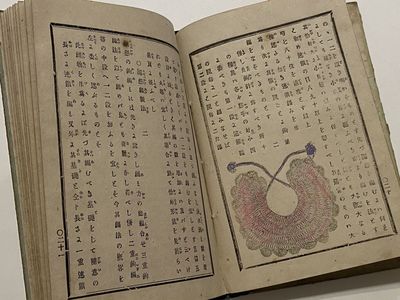


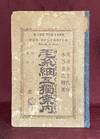

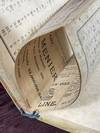
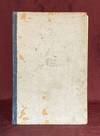

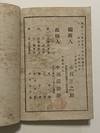

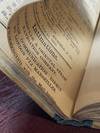
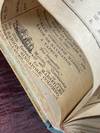

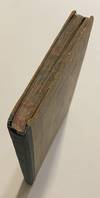
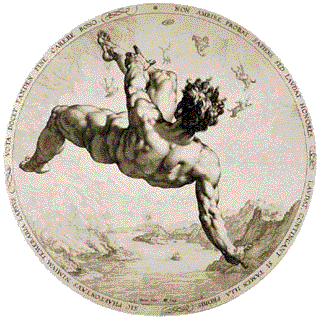
![[The Merchant of Venice]. Uenisu no Shōnin](https://d3525k1ryd2155.cloudfront.net/h/658/014/1693014658.0.m.jpg)
![[BOOKS ON THE MOON]. Les Avantures de Pomponius chevalier Romain, ou l’Histoire de notre Tems](https://d3525k1ryd2155.cloudfront.net/h/598/520/1689520598.0.m.jpg)